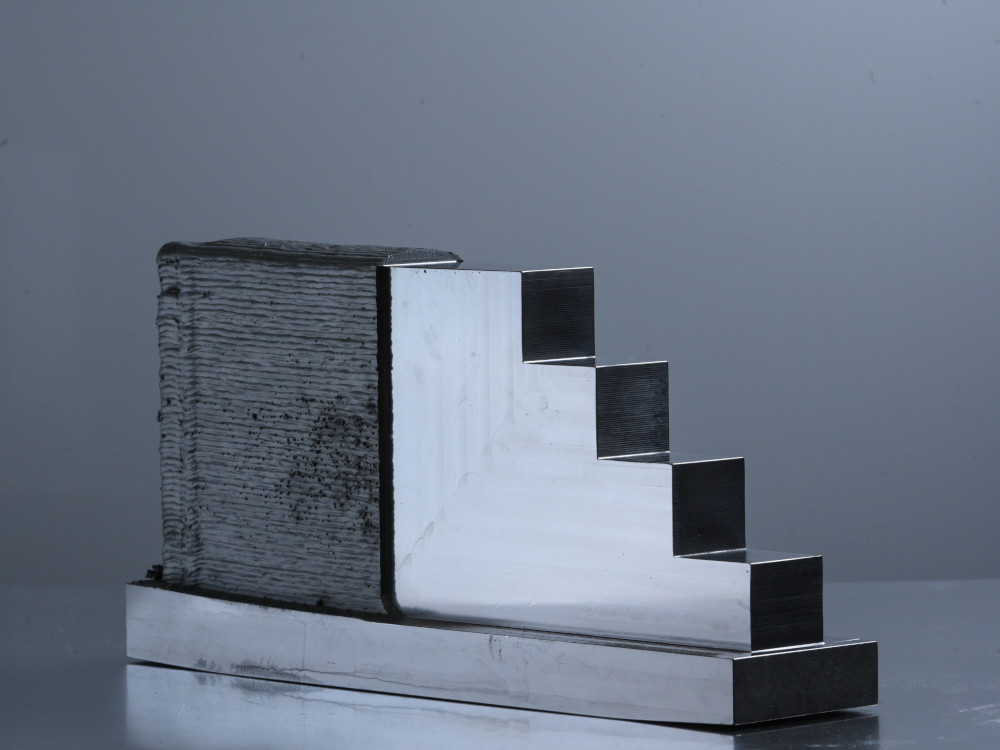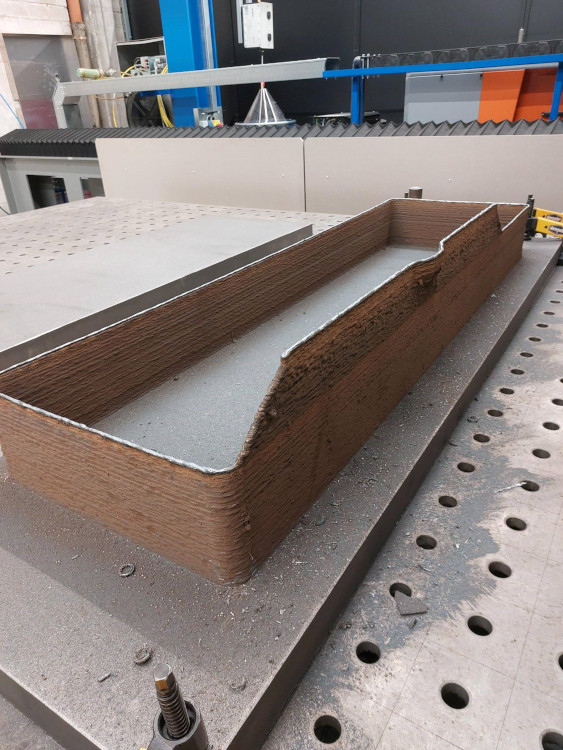
09 May 3D printed steel components in XXL format
A 3D printer with an installation space of 3 m x 4.5 m, which is used as a prototype for research and development purposes, is located at the marine gearbox manufacturer Reintjes in Hameln. This prototype was developed as part of the joint project ‘XXL3DDruck: Energy- and resource-efficient production of large-scale products by additive manufacturing using the example of ship gearbox housings (Energie- und ressourceneffiziente Herstellung großskaliger Produkte durch additive Fertigung am Beispiel von Schiffgetriebegehäusen)’, in which scientists from the Laser Zentrum Hannover (LZH) worked with partners to test a more resource-efficient production of XXL components. Ship gearbox housings with a mass of up to three tons were manufactured layer by layer using a laser-assisted arc welding process, according to the project partners. This high-performance, additive process method for metals achieves a high mass throughput. According to the consortium, the printer thus enables the application of up to 3.2 kilograms of steel per hour.

Laser-assisted arc deposition welding can be used to manufacture steel components layer by layer weighing several tons, such as this one with dimensions of about 1500 x 400 mm2. Image: Reintjes
The process is designed to reduce the use of material and energy compared to conventional manufacturing methods: Custom molds are classically made for the components manufacturing of marine gearbox housings. This work step is eliminated in additive manufacturing. It should also be possible to save material and weight by designing components in a new and different way – for example, with hollow walls. Other individual, component and customer-specific design requirements can also be implemented with laser-assisted arc deposition welding, the project partners explain.
Resources are also saved in ship operation
However, XXL printing not only conserves resources during production, but also later during operation of the ship – if less material is used, the ship has to accelerate less mass and thus also requires less fuel.
A part of a ship’s gearbox housing, which is currently still being manufactured, serves as a demonstrator. Through additive manufacturing, those involved in the project hope to reduce the weight of a ship’s transmission housing by several tons. The long-term goal for production is to reduce manufacturing and procurement time as well as to save raw materials, such as steel, by reducing the amount of material used in each housing.
Project partners
The project was managed by Reintjes. LZH was responsible for developing the process technology. Eilhauer Maschinenbau was responsible for the plant engineering of the 3D printer. Tewiss – Technik und Wissen was responsible for building the print head and controlling the printer. IPH – Institut für Integrierte Produktion Hannover developed an inline measuring technique for process monitoring. The joint project was funded by the German Federal Ministry of Economics and Climate Protection.
Source and image: www.lzh.de






